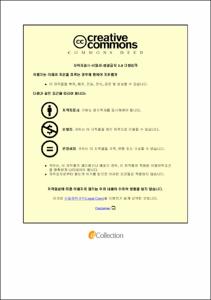흉부 경막외 시술을 위한 정밀하고 안전한 경막외 접근법
- Abstract
- Introduction
Thoracic epidural access (TEA), including epidural block, blood patch, or catheter insertion, has been a widely used intervention to reduce chronic pain or acute postoperative pain. However, TEA has been still challenging, and may be associated with serious neurologic complications. Therefore, this study aims to find a safe, effective, and easy approach for TEA.
Methods
Three studies to find a safe, effective and easy approach for TEA were conducted. The first study was a prospective observational study to evaluate the utility of contralateral oblique (CLO) view and find the CLO view's optimal angle for TEA in the mid-thoracic region. The second study was a prospective randomized controlled study comparing CLO View with the lateral view for mid-thoracic epidural access. The third study was a prospective observational study to evaluate the accuracy of real-time ultrasound-guided thoracic epidural catheter placement (US-TECP).
Chapter I: After securing the mid-thoracic (T4–8) epidural space, fluoroscopic images were obtained. The needle tip location relative to the ventral interlaminar line (VILL), and the needle tip and laminar visualization were measured and analyzed on the CLO views at 40, 50, 60 degrees, and measured angle, and the lateral view.
Chapter II: Patients were randomly allocated to receive mid-TEA under the fluoroscopic lateral view (group L) or CLO view (group C). The primary outcome was the first attempt success rate of mid-TEA. The secondary outcomes were patient satisfaction and procedural pain intensity. Other outcomes measures included needling time, number of needle passes, number of skin punctures, final success rate, crossover trial success rate, and procedure-related complications.
Chapter III: After performing the real-time US-TECP, the fluoroscopic views were obtained. The location of epidural catheter tip and contrast dispersion were evaluated after obtaining the thoracic epidurography. The variables related to the operation such as success rate, needling time, number of needle passes, and the first attempt success rate were measured.
Results
Chapter I: A total of 30 subjects participated in this study. The needle tip was clearly visualized in all CLO views, compared with the lateral view (100% vs. 36.7%, P <0.001). The visualization of the laminar margin and the needle tip location on (or just anterior to) VILL using the CLO measured angle were significantly clearer compared with those in the CLO view at 40 and 50 degrees and the lateral view (laminar margin: 40˚, 56.7% vs. 3.3%, P <0.001; 50˚, 56.7% vs. 26.7%, P =0.012; 90˚, 56.7% vs. 26.7%, P =0.035; needle tip location: 40˚, 96.7% vs. 26.7%, P <0.001; 50˚, 96.7% vs. 63.3%, P =0.002; 90˚, 96.7% vs. 66.7%, P =0.012). There was no difference in these values between the CLO view at 60 degrees and CLO measured angle.
Chapter II: In total, 44 patients (21 patients in group L and 23 patients in group C) were included in the study. First attempt success rate was significantly higher in group C than in group L (69.6% vs. 28.6%, P=0.016). Final success rate was significantly lower in group L compared with group C (76.2% vs. 100%, P=0.044). Pain intensity scores were significantly lower in group C compared to group L, 2.2 ± 0.9 versus 3.7 ± 1.8, respectively (P = 0.002). Patient satisfaction was significantly greater in group C than in group L (6.0 [6.0 – 7.0] vs. 5.0 [4.0 – 6.0], P=0.001). During the mid-TEA, needling time and number of needles passes were significantly less in group C over group L (94.0 [84.0 – 155.0] vs. 125.0 [115.0 – 205.0], P=0.035; 1.0 (1.0 – 2.0) vs. 3.0 (1.0 – 4.0), P=0.003). There were no serious complications in both groups.
Chapter III: The thirty-eight patients participated in this study. During the real-time US-TECP, the median value of needling time was 49.0 seconds and the number of needle passes was 1.3±0.6. The first attempt success rate was 76.3%. After the assessment of thoracic epidurography, we found that the epidural catheter tips were positioned all in the epidural space and epidural catheter tip was almost located on the between T9 and T10 (84.2%). The evaluation of contrast dispersion showed that the cranial and caudal of contrast spread was 5.4±1.6 and 2.6±1.0 level of a vertebral body, respectively after injection of 4 ml of contrast medium. There were no complications related to the procedure.
Conclusion
In the mid-thoracic region, a CLO view at 60 degrees and obliquity measured based on magnetic resonance imaging (MRI) or computed tomography (CT) may be optimal angle for fluoroscopic guided TEA, can provide clearer visualization of laminar margin and needle tip, and more consistent needle tip location than the lateral view. Without available CT or MRI images, the use of CLO view at 60 degrees can increase the success rate and patient satisfaction, reduce procedural time and patient discomfort, and provide the possibility of guaranteeing the safety when performing mid-TEA. In the low-thoracic region, real-time US-TECP showed a complete success rate, suggesting that real-time ultrasound guidance may be useful for TECP with an increased success rate, reduced patient discomfort, and no radiation hazard. Therefore, the present results recommend that the fluoroscopic CLO view at 60 degrees and real-time US guidance may be primary considered for achieving the safe, effective, and easy TEA.
- Issued Date
- 2021
- Awarded Date
- 2021-02
- Type
- Dissertation
- Alternative Author(s)
- Doo-Hwan Kim
- Affiliation
- 울산대학교
- Department
- 일반대학원 의학과의학전공
- Advisor
- 최성수
- Degree
- Doctor
- Publisher
- 울산대학교 일반대학원 의학과의학전공
- Language
- eng
- Rights
- 울산대학교 논문은 저작권에 의해 보호받습니다.
- Appears in Collections:
- Medicine > 2. Theses (Ph.D)
- 파일 목록
-
-
Download
 200000366197.pdf
기타 데이터 / 1.99 MB / Adobe PDF
200000366197.pdf
기타 데이터 / 1.99 MB / Adobe PDF
-
Items in Repository are protected by copyright, with all rights reserved, unless otherwise indicated.